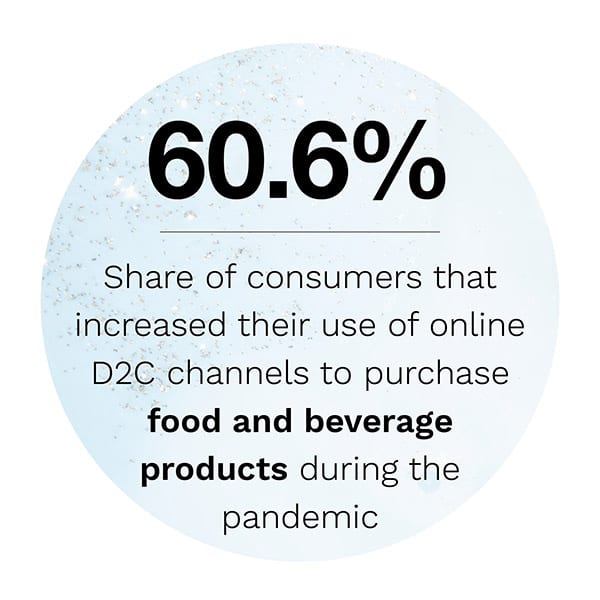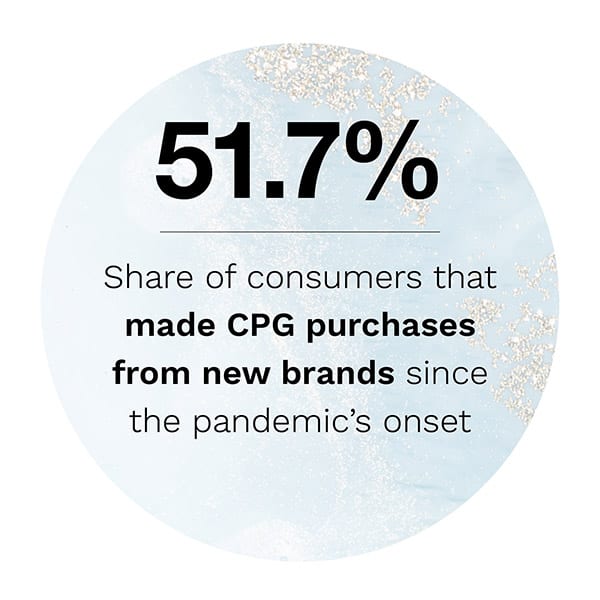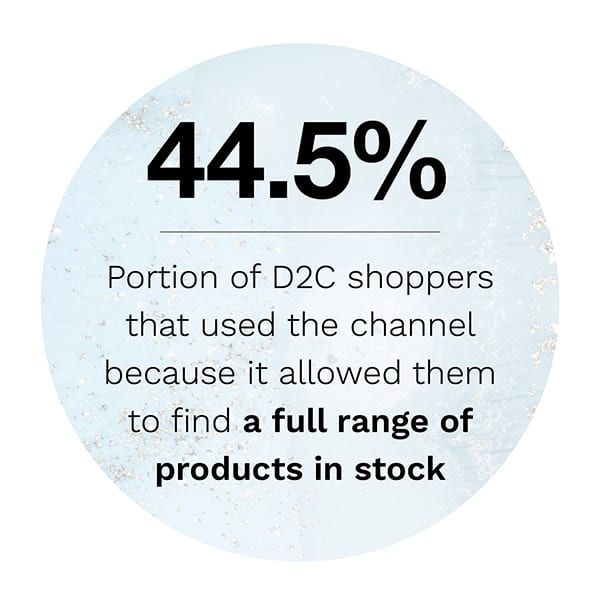NEW DATA: The Six Reasons Why More Consumers Are Buying Directly From Brands
 Amazon’s reputation rests on providing consumers with almost anything they could want in one place — quickly — and with just a few clicks.
Amazon’s reputation rests on providing consumers with almost anything they could want in one place — quickly — and with just a few clicks.
Product shortages and delivery delays severely undermined this basic value proposition in the early days of the pandemic, however, and some logistical challenges remain even though certain issues have improved.
 It turns out that consumers may be more willing than expected go the extra mile to find their favorite products, though. The use of online direct-to-consumer (D2C) channels to purchase consumer-packaged goods (CPG) has grown by 50.1 percent since the pandemic began, surpassing the growth of online marketplace use in key product categories like food and clothing. This means consumers who flocked online due to the pandemic were in certain instances more likely to use D2C channels than marketplaces like Amazon.
It turns out that consumers may be more willing than expected go the extra mile to find their favorite products, though. The use of online direct-to-consumer (D2C) channels to purchase consumer-packaged goods (CPG) has grown by 50.1 percent since the pandemic began, surpassing the growth of online marketplace use in key product categories like food and clothing. This means consumers who flocked online due to the pandemic were in certain instances more likely to use D2C channels than marketplaces like Amazon.
These are among the key findings that have emerged from PYMNTS’ latest research study, D2C And The New Brand Loyalty Opportunity, a collaboration with sticky.io. The study is based on a survey of almost 2,200 U.S. consumers and examines their use of D2C and indirect channels to procure a diverse array of packaged goods.
PYMNTS research reveals some dramatic shifts in how consumers are obtaining CPG brands both online and offline. These shifts represent an unprecedented opportunity for brands to forge more direct relationships with their customers and to overcome some of the challenges facing conventional retail distribution systems — provided they have the digital resources to capitalize on these changes.
These shifts are reflected in consumers’ growing tendency to try new brands. PYMNTS research shows that 51.7 percent of consumers have made CPG purchases from new brands since the start of the pandemic, and younger consumers are the most likely to do so. We found that 58.4 percent of Generation Z consumers have bought new food and beverage brands during the pandemic, for example, while 47.7 percent bought new retail product brands.
Brand affinity nevertheless remains strong in product areas like food, clothing and cosmetics, for which consumers tend to have particular tastes and preferences. This seems to be one of the factors behind the increased usage of online D2C channels. PYMNTS’ findings reveal that 60.6 percent of consumers have used D2C sites “somewhat” or “much more” since the pandemic began to purchase food and beverages, compared to 59.9 percent who have increased their use of online marketplaces for such purchases. In the case of clothing and accessories, 49.9 percent increased their D2C use, and 50.1 percent increased their use of the channel to purchase beauty and cosmetics products. Consumers in both of these segments are less likely to have increased their use of marketplaces.
 One factor looms larger than any other when it comes to why consumers choose D2C channels: product availability. More than 44 percent of consumers cited the ability to find a full range of products in stock, surpassing such factors as affordability. Another factor is also uniquely important to D2C users: the ability to find specific products. This is the second-most commonly cited factor, suggesting that old-fashioned rules of supply and demand may be driving many consumers to D2C channels — although the quality of service and engagement brands offer is what will keep them there.
One factor looms larger than any other when it comes to why consumers choose D2C channels: product availability. More than 44 percent of consumers cited the ability to find a full range of products in stock, surpassing such factors as affordability. Another factor is also uniquely important to D2C users: the ability to find specific products. This is the second-most commonly cited factor, suggesting that old-fashioned rules of supply and demand may be driving many consumers to D2C channels — although the quality of service and engagement brands offer is what will keep them there.
To learn more key market insights about the changing state of the D2C market, download the report.
About The Report
D2C And The New Brand Loyalty Opportunity is based on a consumer survey examining the use of direct and indirect channels to purchase consumer-packaged goods amid the pandemic.